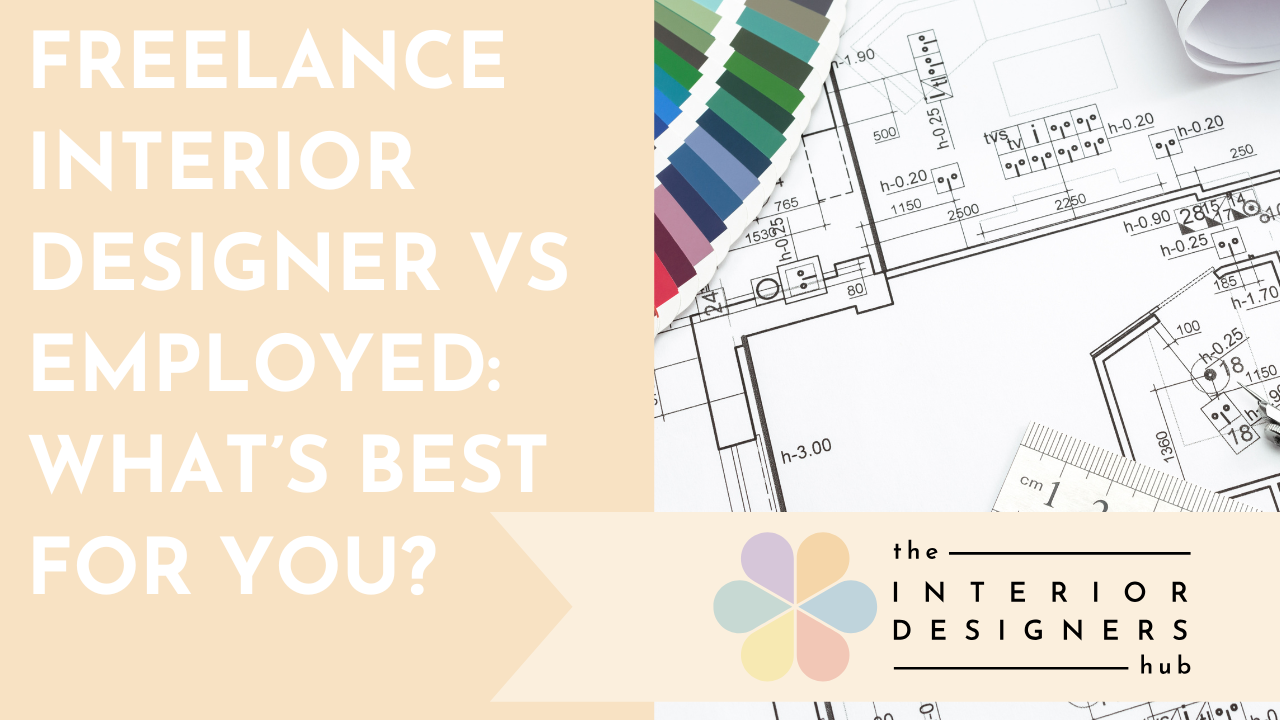The Definitive Technical Drawing Kit List for Interior Designers

Call me a nerd 🤓, but there is nothing so satisfying as producing a perfectly drawn floor plan or elevation- by hand. Anyone with me?!
I very rarely (if ever these days) have any professional need to produce hand drawn plans for client work, but I still draw by hand when supporting a cohort of students through the technical drawing modules in our Level 3 Diploma in Professional Design.
 |
When I do have the opportunity I always enjoy the experience, actually finding it quite therapeutic! I love to have all of my equipment arranged beforehand, find some quiet time to lose myself in the simple pleasure of converting my thoughts into a communicable plan on a piece of pristine white paper |
It wasn't always like this for me though. I have to admit that I struggled initially with some aspects of technical drawing. My usual perseverance and dogged determination together with a change of teacher and some better equipment soon had me on the right path.
My regular readership will know that I am a very kinaesthetic learner and therefore the correct teaching style which works for me is super important. As an education professional I have come to realise this over the duration of my career and this is something we bake into the very soul of our courses. The change of teacher all those years ago proved a turning point for me and ignited the passion.
|
The second learning was that there is no substitute for good equipment. A plumber needs the correct spanner to do the job and an Interior Designer is no different. I cannot tell you the difference a few handy recommendations of what to buy made to my experience. So I am here to share with you my personal kit list so you can have the best experience possible. |
 |
So let's get into this! Here are my top 10 recommendations (with a couple of pretty good alternatives) you need to have before beginning technical drawing; and if you want to grab the complete kit list all in one place, you can download it here
1. A Drawing Board
The drawing board makes number one on our list for a reason - it has the biggest influence on your output (aside from your own drawing skills of course!). I have suffered with inferior A3 boards like this or this in the past. Cheaper versions like these are flimsy, break easily and ultimately add up to a false economy. They often aren't positioned at the correct angle - being too shallow which can cause back pain in longer sessions. And whilst they are marketed as A3 boards, they really leave little room around the edges for you to securely hold your paper in place.
It is also important for your board to have a 'parallel motion' (a sliding ruler fastened at right angles to the sides of your board) which ensures your drawing is always square and level. The boards we use at Hub HQ have a heavy-duty, weighted pulley type system which provides just the amount of friction to glide easily up and down the page but also does not give way when you are drawing. Cheaper alternatives usually have a plastic ruler set into plastic channels at the side, which add to the friction and are nowhere near as nice to use. They eventually require replacement, as the plastic runners are not that durable and subject to wear out.
Here at Hub Insiders HQ we exclusively use Orchard professional drawing boards and we have just bought another updated set that we use to support our current cohort of students when we meet up and run our in-person drawing workshops.
2. Mechanical Pencils
Working to millimetre precision requires a pencil that can deliver that level of accuracy and frankly the only way to achieve that is to buy a mechanical pencil and replacement leads. Expect to pay at least £5 for a decent quality item like the Rotring Tikky. Great name eh!
3. A Putty Rubber
A putty rubber works in a completely different way than most of the erasers you will have used during your school days - who knew? Often referred to as a kneaded eraser, the putty rubber is pushed into the paper and removes the carbon left behind by your pencil lead. This is a much preferred and cleaner method of erasing than taking a harsher eraser and smearing that precision carbon line across your floor plan. Ultimately this gives a better, and far more presentable result and is a small investment which will yield a great result time and time again. I have used Windsor and Newton erasers, and Faber-Castell erasers in the past, and I find both are as good as each other.
4. A Steel Rule
In technical drawing we are often required to start a line at right up to another line or intersection. If your ruler does not end with the zero right on the edge of the rule like this example it can be quite tricky to get an accurate measurement, and it can be really frustrating to have to measure and keep moving rulers. Drawing your line takes longer and potentially become less accurate.
Other key benefits of a steel rule over a plastic one is that they do not bend and flex in the same way, which ensures straighter lines. In addition to this (and the greatest benefit to a steel rule) is that when you come to ink the drawing, a plastic rule is susceptible to cause bleeding of the ink under the rule, which smudges what you have just drawn. A steel rule sets the ink much better.
5. Technical Drawing Pens
Precision (sorry to harp on about it, but...) is key in technical drawing and a range of pens will enable you to achieve this. Ideally, you want a set of pens that have different nib thicknesses: you will need pens with 0.3, 0.5 and 0.8 at very least.you need to show the line hierarchy in all of your drawings and this is simply not possible with a single pen size.
The way the ink flows onto the page is also of consideration here and a good quality set of technical pens such as these or (preferably) these will ensure a steady and even flow at a perpendicular any writing angle to the page.
6. A Set Square
A set square that preferably starts at zero. Buildings almost always contain right angles and lots of them. All the reasons outlined above why the steel rule starting at zero was a good idea are equally valid here.
7. Clips or Tapes
It goes without saying that you need to secure your paper before beginning your floor plan or elevation. In my experience securing your paper using masking tape in each of the 4 corners and wrapping to the underside of the drawing board is the best way. Get a good quality masking tape such as Scotch or similar brand which will give you enough "stickiness" to attach to both paper and tracing paper.
Beware of using Frog tape as it is too thick and invariably gets snagged and caught on the parallel rule as you move it up and down and can in some circumstances even rip the paper if you are not careful. Clips are preferred by some but for me even a slimline clip will protrude from the board and it just gets in the way. If you do want to try clips check these out as they are among the best of their kind but I would go for good ole masking tape - sometimes simple is best!
8. A3 Paper
Importantly, you need to consider paper weight here. No, not the painted pebble that your favourite Niece or Nephew gave you once upon their return from their seaside holiday; I am talking about the weight of your paper!
Paper weight (or thickness) is expressed as a "gsm" number which stands for Grams per Square Meter. An ideal weight for your paper is 45 gsm and are often sold as layout pads. These have a smooth surface allowing a better glide for the pencil/ pen and produce a clean finished drawing. Another feature of your Layout pad should be that the pages are acid free. This prevents discolouration and fading over the medium to longer term.
In addition to a layout pad, you will also need some decent A3 Tracing Paper. Tracing paper needs to be thick enough so that it does not crinkle under the friction of the parallel rule moving up and down. Here I would recommend a 90 GSM weight for stability.
We have in the past used Daler Rowney and Graphic Pro. Either are good and would do the job nicely.
9. Scale Ruler
Who wants to do the math every time? A decent scale ruler will do all this for you and save you hours on your calculator. A Tri-scale made of aluminium such as this great example means that it will not get cracked or chipped if dropped and last a lifetime if cared for well.
10. Stencils and Curves
You can buy stencils for pretty much anything. There are some great examples here which will ensure your drawings will be professional, consistent and to a very high standard.
In additional to stencils, one of my must-have tools is a flexible curve, which pretty much does what it says on the tin! You mould the ruler to the exact curve you are looking for (door swing, feature curved wall...) and then draw along the edge of the curve to create a smooth, error-free finish.
If you want to get yourself properly kitted out for technical drawing by hand, then grab my free kit list recommendations download here.
Not sure how to set up and run your own business?
👇 Grab our step by step roadmap and stop guessing! 👇
By submitting this form you consent to receiving marketing emails. You can subscribe at any time.









